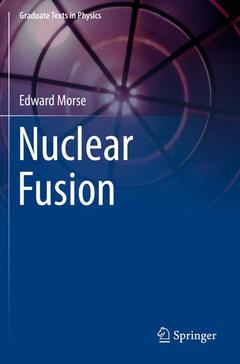Description
Nuclear Fusion, Softcover reprint of the original 1st ed. 2018
Graduate Texts in Physics Series
Author: Morse Edward
Language: English
Subject for Nuclear Fusion:
Publication date: 12-2018
Support: Print on demand
Publication date: 10-2018
Support: Print on demand
Description
/li>Contents
/li>Biography
/li>Comment
/li>
Dr. Edward Morse is Professor of Nuclear Engineering at the University of California, Berkeley, where for over thirty-five years he has taught the department’s three senior undergraduate and graduate courses on fusion, plasma physics, and fusion technology. He has authored over 140 publications in the areas of plasma physics, mathematics, fusion technology, lasers, microwave sources, neutron imaging, plasma diagnostics, and homeland security applications. For several years he operated the largest fusion neutron source in the US. Frequently consulted by the media to explain the underlying science and technology of nuclear energy policy and events, Dr. Morse is also a consultant and expert witness in applications of fusion neutrons to oil exploration.
Combines theory, experiments, and technology into a single teaching text and reference
Written in a concise style, accessible to both physicists and engineers
Presents computation on an equal footing with analytic theory
Emphasizes the underlying basic science for all of the material presented
These books may interest you

Magnetic Fusion Technology 232.09 €

Magnetic Fusion Technology 232.09 €


